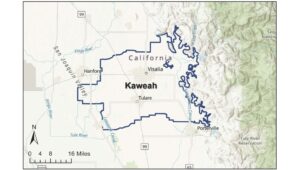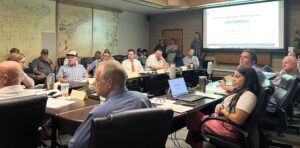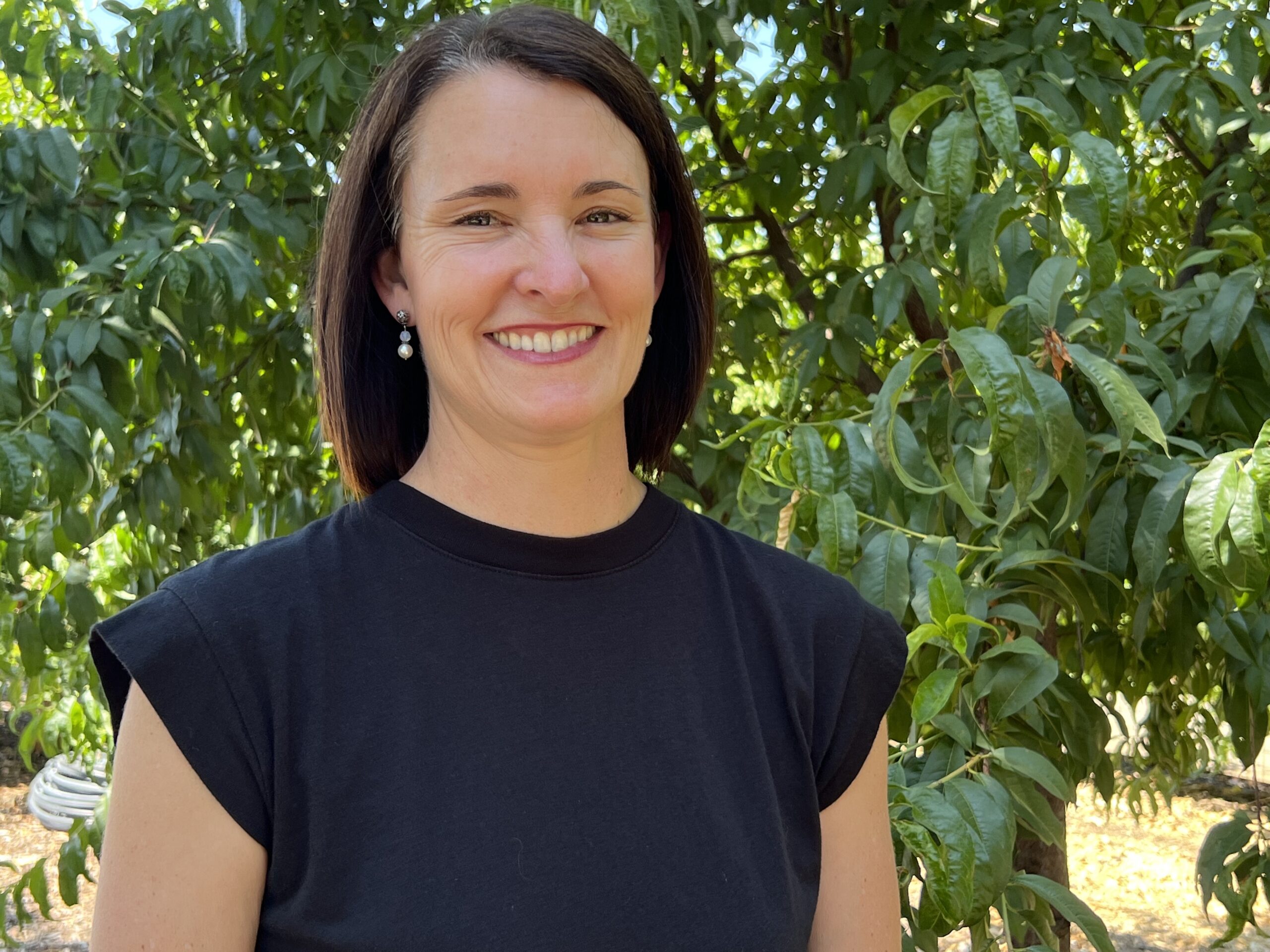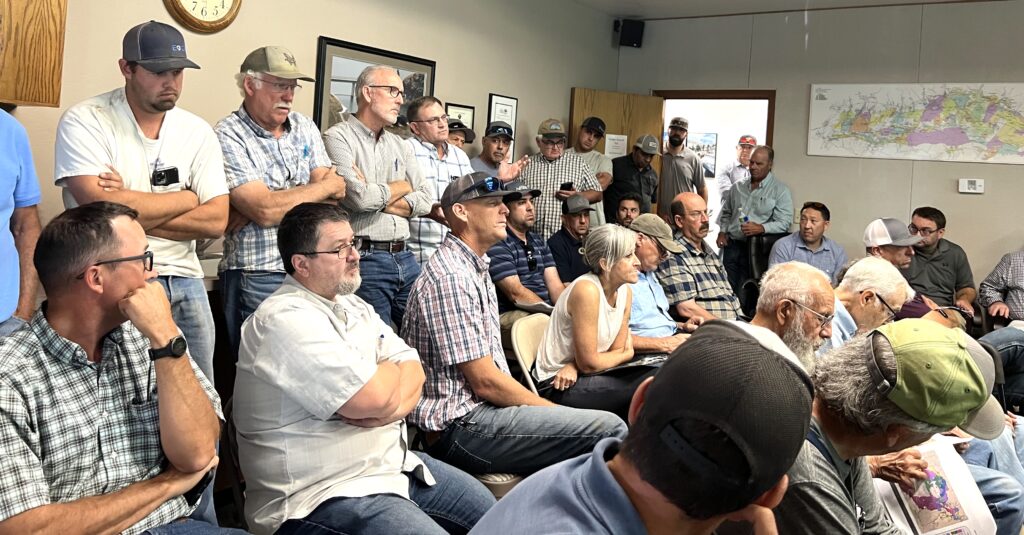Groundwater relations in the Kaweah subbasin in Tulare County have gone from bad to worse.
Fingers have been pointed, ultimatums laid down and patience has run out.
At its Sept. 26 meeting, the Greater Kaweah GSA board accepted a recommendation to allocate 1.87 acre feet of groundwater per acre to its farmers for the 2023-24 growing season.
That’s too high, according to managers of two nearby groundwater agencies, the East and Mid-Kaweah GSAs. And it was the last straw after years of tensions. One agency manager suggested the allocation could prompt legal action. And one of several angry letters from agency managers was copied to the state.
That could prove significant.
As this is all playing out, the Kaweah subbasin is slated to go before the state Water Resources Control Board after its groundwater plan was found inadequate.
It joins five other valley subbasins: Tulare Lake, which covers Kings County; Tule, which covers the southern valley portion of Tulare County; Kern; Chowchilla; and Delta-Mendota.
Tipping point
The stakes are high.
If the Water Board finds Kaweah and the other subbasins have been recalcitrant in adopting sustainability measures it could put them into “probationary status,” allowing the state to take control of groundwater planning, including setting pumping allocations and issuing steep fees and fines.
Could this latest row over pumping allocations put Kaweah into probation?
“It’s got to,” said Mark Larsen, Greater Kaweah GSA manager. “Probation is clear and present. If there was any doubt before, there is none now. I understand the frustration of the other two is at a tipping point. But I wish they wouldn’t give up on negotiation.”

Negotiation is difficult when the other GSAs believe Greater Kaweah is simply allowing more pumping than is sustainable.
A large swath of the land within Greater Kaweah isn’t covered by an irrigation district. That means many Greater Kaweah farmers don’t pay to import surface water, as other farmers in irrigation districts have done for decades in order to replenish the groundwater.
“If there are no changes (in Greater Kaweah’s pumping allotments), there’s going to be a lot of other spurious activity,” said Mike Hagman, manager of East Kaweah GSA, in reference to legal options.
“We’ll take whatever action we can to stop this. They are taking our water and selling it for ten cents on the dollar.”
He referred to how groundwater moves in the subbasin, east to west.
Marching toward SGMA
The contention is that while farmers in the East and Mid-Kaweah areas have been paying water districts to import surface water that has recharged the aquifer, farmers in Greater Kaweah have been abusing that largesse by over pumping without contributing water or money.
Under the Sustainable Groundwater Management Act (SGMA), all that groundwater has to be accounted for as subbasins are mandated to come into balance by 2040.
Hagman and Mid-Kaweah GSA General Manager Aaron Fukuda have been frustrated by what they view as the Greater Kaweah GSA’s flagrant disregard for reality under SGMA.
At the standing-room-only Sept. 26 meeting, Fukuda urged the Greater Kaweah board to reduce the proposed pumping allocations.
“How much longer can folks who are doing the right thing wait? I implore the board, these numbers don’t work. Don’t accept them,” he said.
But the board did, much to the chagrin of managers and growers in East and Mid-Kaweah GSAs, which have aggressively cut pumping allocations for their own growers, taken land out of farming and invested heavily in recharge projects.
No avoiding the pain
Hagman acknowledged the pain of growers in Greater Kaweah, but said East Kaweah growers have suffered as well. Recently announced pumping limits in East Kaweah have allocated .90 acre feet of groundwater per acre for its farmers next year.
“We’re overdrafting, we are taking more out than what God puts in the ground for us,” Hagman said of the subbasin. “We’ve got to solve this basin problem.”
Larsen insisted that Greater Kaweah has contributed to that effort.
“There’s been a lot of positive activity,” he said, including 4,000 acres of recharge basins and a land fallowing program that is in progress.
“We have significantly improved the basin’s status, and there is an assumption that we have not,” he said. “We are concerned and would like to be on the same page. That is our objective.”

Among those upset by Greater Kaweah’s pumping allocations are its own farmers, some who’ve said they had already made plans for the next growing season and a pumping allocation of 1.87 acre feet per acre will cripple their operations.
Growers want more input
Some of those growers are represented by Delta View Water Association, which formed in 2019. Executive Director Rachel Glauser said that while communication has improved, Greater Kaweah failed to seek input from growers and released allocation information too late in the year for farmers to adjust.
The association represents many farmers in areas outside of irrigation districts, which have little to no surface water. Delta View has been lobbying to add another of its members to the Greater Kaweah board to more equally represent those in the GSA.
“We understand that California groundwater rules are changing and we want to be a part of the solution,” Glauser said. “At the same time, these are multi-generational farm and business families who provide our much needed food and fiber and they’ve been given a deadline of 2040. Give them that time as they move to make monumental changes.”
Sharp differences
Larsen, who joined Greater Kaweah in December 2022 after a lengthy stint at the Kaweah Delta Water Conservation District, said much of this could have been avoided in 2014 when SGMA came into effect.
“The Kaweah Subbasin should have been one giant GSA, not three separate ones,” he said. Splinter groups formed and the area was divided. “All three will always look at things differently.”
The sharp differences are a disappointing development for many, as coordination is the key word right now.
“We have all shared the pain in this completely across the board,” said Craig Hornung, vice president of East Kaweah GSA. “East Kaweah made that decision two years ago to start that pain, and we continued it last year and we continued it this year. We set our pumping limit to change behavior and our growers are all in. Our decisions are going to benefit everyone in the basin greatly. We do have to work together and our coordination among all three GSAs is absolutely critical.”
Share this:
- Click to share on Facebook (Opens in new window)
- Click to share on Twitter (Opens in new window)
- Click to share on LinkedIn (Opens in new window)
- Click to share on Reddit (Opens in new window)
- Click to share on Tumblr (Opens in new window)
- Click to share on Pinterest (Opens in new window)
- Click to share on Pocket (Opens in new window)
- Click to share on Telegram (Opens in new window)
- Click to share on WhatsApp (Opens in new window)
- Click to print (Opens in new window)









You must be logged in to post a comment.